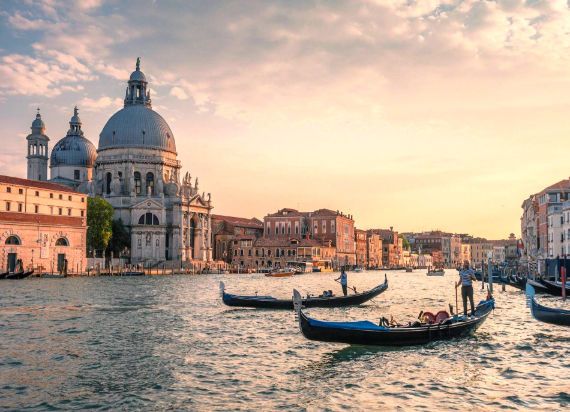When Giulio II transferred his home to the first floor rooms of the Borgia apartment, he wouldn't have appreciated the frescos of Pinturicchio as they portrayed his hated predecessor Alessandro VI. He therefore decided to move to the second floor and to have the rooms redecorated.
At the end of 1508 he made Raphael, as well as other artists come to Rome who started work on the studio and private library of Giulio II the following year. The responsibility for the work lay with Raphael due to the success he had with his first fresco ‘La scuola di Atene'.
The Raphael Rooms are featured on all our Tours of the Vatican, and the details of Raphael's Rooms are as follows:
STANZA DELLA SEGNATURA is the room of the Segnatura which contains Raphael's most famous frescoes. Besides being the first work by the great artist in the Vatican they mark the beginning of the high renaissance. The room takes it's name from the highest court of the holy see which was presided over by the pontiff.
The library is decorated so that each of the four walls is dedicated to one of the sciences of the time: Theology, Philosophy, Poetry and Law. Their personification is depicted in four large circles painted on the ceiling, whilst on the walls are painted the most famous representatives of each field with rectangular paintings.
With these large frescos, Raphael was able to transform these abstract themes into very natural and important images which make up a narrative cycle.
FRESCO OF ‘SCHOOL OF ATHENS' (Raphael 1509-1511) To represent Philosophy and rational truth, Raphael painted, a school of Philosophy with small groups of thinkers discussing their ideas. In the centre are the most important thinkers of ancient Greece: Plato and Aristotle, totally absorbed in their discussions.
Plato has under his arm the ‘Timeus', the book that reflects upon the origin and creator of the cosmos. Whilst Aristotle holds the ‘Ethics' which deals with the right behaviour of man. Plato points his finger up high which symbolically refers to the superior source of inspiration for ideas, whilst Aristotle points to the ground , the starting point of all natural sciences.
In front of them, lying on the stairs, is sat Diogene, who despises assets and the way of life that comes from them. To the left next to Plato is his teacher Socrates who counts on his fingers the four steps that must be climbed in order to create a philosophical argument. Raffaello is depicted to the right hand side next to the pillar.
THE PARNASSUS (Raphael 1509-1511) To illustrate poetry Raphael chose the representation of Apollo who plays the music surrounded by the 9 muses and by poets of both antique and modern times. To the left is Omero, the blind cantor , Dante and in the foreground Saffo.
The Parnassus' was dedicated to the arts and during antiquity there was a temple consecrated to Apollo, god of music and poetry. This connection is made evident by the window that looks out onto the courtyard of Belvedere, which Giulio II had ordered redesigned by Bramante to keep the collection of antique statues.
Amongst others, was l'Arianna dormiente' which the painter had chosen as a model. With his fresco, Raphael also wanted to allude to a theme much glorified by contemporary poets who celebrated Giulio II as a new Apollo and his papacy as the new golden age for poetry and art.
‘EXPULSION OF HELIODORUS' (Raphael and Giulio Romano 1512-1514) For the frescos of the ‘stanza di Eliodoro', Giulio II's courtroom , Raphael planned a special figurative programme which clearly hints at the problem of the church.
Therefore the expulsion of Heliodorus from the temple of Jerusalem was interpreted as a warning for the French that in that moment (1512) they had occupied some property of the church. To represent the dramatic event, Raphael chose a type of coincidental narration in which successive moments of the same event are represented at the same time in one painting.
On the left hand side amongst the onlookers is pope Giulio II sat in the gestatorial chair looking at the high priest Onias who is standing in front of the alter and asks god to free Jerusalem from the enemies who occupy it.
The scene to the right represents the fulfilment of the prayer, the heavenly knight dressed in golden armour assisted by two youths who hover at his side and beat and banish the violator Heliodorus from the sanctuary. The two groups are united in a closed composition from the architectural perspective with it's vanishing point in the alter situated at the centre of the painting.









